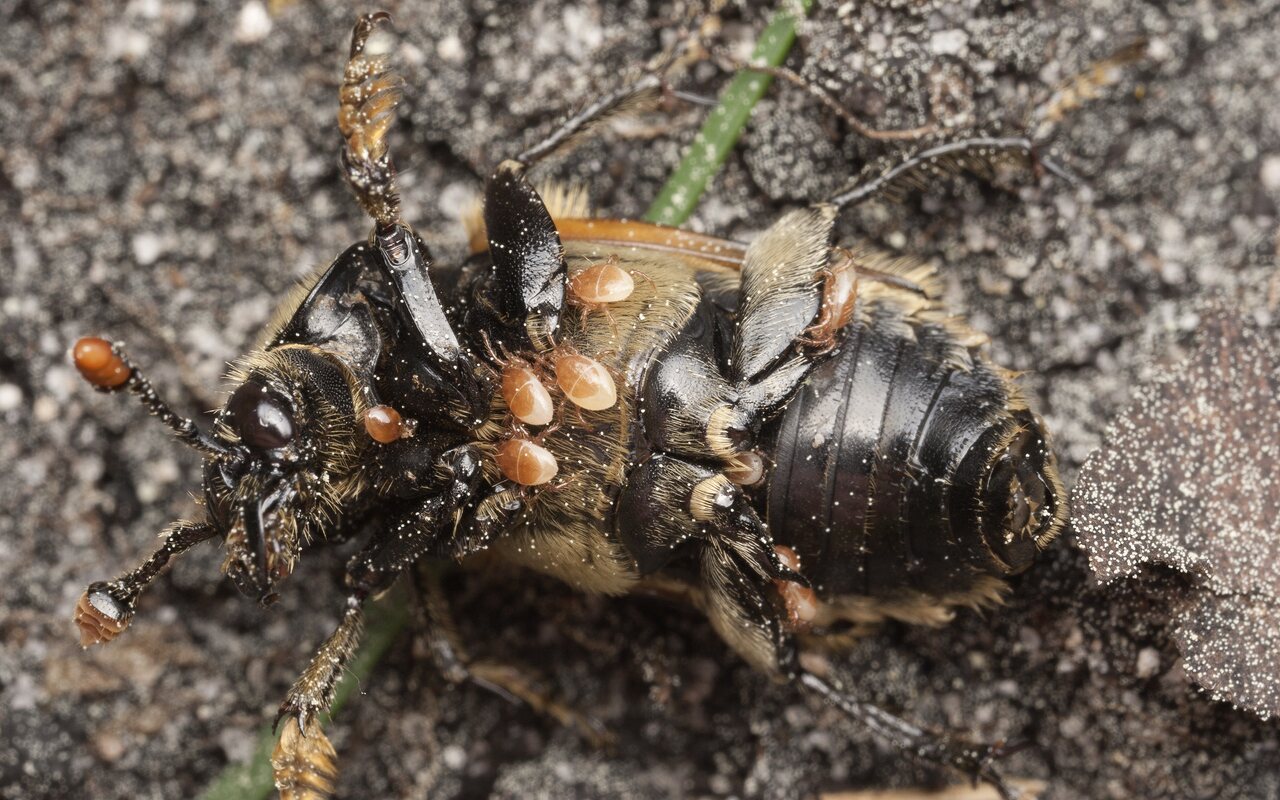
Nicrophorus vespillo · paprastasis duobkasys
Poecilochirus necrophori mites deutonymphs on Nicrophorus vespillo. Poecilochirus mites are phoretic on burying beetles and reproduce alongside beetles, while these care for their offspring at vertebrate carcasses.
- vespillo burying beetle, common burying beetle
- Gemeiner Totengräber
- paprastasis duobkasys
- raibais kapracis
- grabarz pospolity
- ukbeetles.co.uk/nicrophorus-vespillo
- en.wikipedia.org/wiki/Nicrophorus_vespillo
- naturespot.org.uk/species/nicrophorus-vespillo
It has a paleartic distribution and is commonly found across Europe and Asia, extending from Western Europe to Mongolia. These are large beetles, from 12 to 25 mm in length and fly strongly. The beetles have two striking orange-yellow bands on the wing-cases. They are distinguished from others in the genus by the long golden hairs on the body and wing-cases as well as the orange club-shaped ends of the antennae and the shape of the hind legs.
They live on and lay eggs near carrion. The beetles reproduce from May to September, with both parents participating in preparations and care of the offspring. The parents will excavate beneath suitable small animal corpses, also covering it with the soil, so that it becomes buried and ready for the female to lay eggs. After burial they remove hair or feathers and shape the carcass into a ball within a small underground space. Eggs are laid in the soil around the chamber. Once the young beetles hatch as larvae, both parents will feed and protect for them. This care continues for at least 10 days and is up to 30 days earlier in the season when temperatures are cooler and the young develop more slowly. The young will consume the corpse directly and also eat pre-digested food regurgitated by their parents. The final stage in their development is to pupate in the soil and then emerge as adult beetles. Pupae formed towards the end of the breeding season may spend the winter in hibernation and emerge as juvenile beetles the following spring.
Poecilochirus mites travels (proresis) on N.vespillo
‥
0 comments
Add a comment